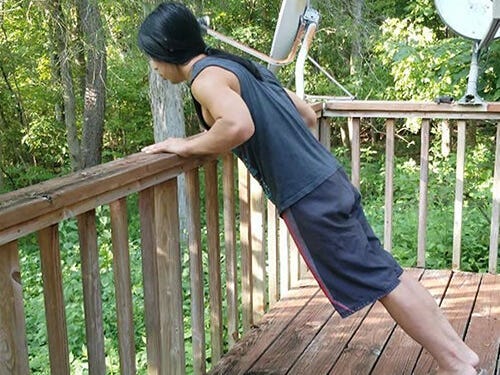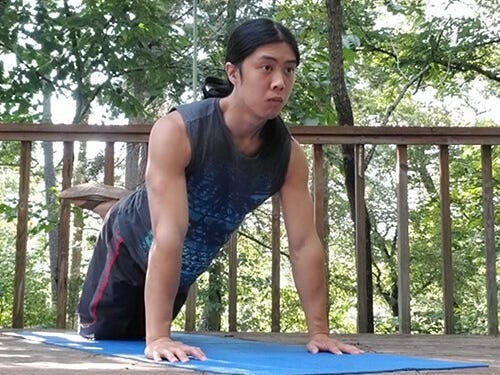
Mike Harrington/Getty Images
- Push-ups are great for building strength and muscle, and can be modified for all fitness levels.
- To start working up to push-ups, practice eccentric and incline exercises, a personal trainer says.
- As you get stronger, add more reps and intensity over time to keep improving.
Push-ups are a foundational bodyweight exercise that can help you build muscle in the arms, shoulders, back, and core. However, the exercises take a certain amount of existing strength and stability to accomplish, which can be intimidating for fitness beginners.
If you're working towards full push-ups or just trying to do more of them, scaled exercises like inclines, negatives, and knee push-ups can help, according to Ben Foster, head coach and founder of the People's Athletic Club.
Adding these variations into your routine can help you progress over time whether you're striving to do one push-up or 100, Foster said.
"The goal is for people to continue doing a little bit more, and setting the stage to make progress week over week," he told Insider.
Start by breaking down the movement
Scaling down push-ups to make them less challenging can help people avoid bad habits and poor form, according to Hampton Liu, founder of Hybrid Calisthenics. While Liu doesn't have formal training in exercise science, his TikTok videos have gone viral for offering accessible versions of exercises like push-ups and pull-ups.
"I think people have just never been taught how to build up. They often have the idea that if something is too hard, you just keep trying it. With an easier movement, you're able to feel the muscles you're using better," Liu told Insider.
One of the easiest ways to build up to push-ups is to work on the eccentric portion of the movement, or lowering yourself to the ground slowly from the top of the plank, according to Foster. Sometimes known as a "negative," the exercise allows you to get some resistance from gravity, without the intensity of pushing yourself back up, he said.
To do an eccentric push-up, begin in a high plank position with your hands underneath your shoulders and your arms at a 45 degree angle to your body. Slowly and with control, lower your chest and hips to the ground. At the bottom, reset to a high plank and repeat.
Foster recommends doing two to three sets of eight to 12 reps.
Work up to incline push-ups with your hands on a wall or box
In addition to eccentric exercises, you can train your muscles for push-ups by using an elevated surface.
Placing your hands on a wall or box changes the angle of the push-up to create less resistance from your weight and gravity, Liu said.
Less resistance means less difficulty in moving through the concentric phase of the exercise, or pushing up, so you can successfully complete the movement.
Foster recommends measuring how tall the incline is, so you can gradually reduce it to distribute more of your weight into the exercise over time.

Hybrid Calisthenics
Knee push-ups can be helpful, but avoid the common mistake of disengaging the core
Knee push-ups are slightly more challenging than incline push-ups. They can be a helpful progression, Foster said, but avoid the common mistake of keeping the hips raised, which takes tension away from your core.
Instead, make sure that both your hips and chest reach the ground. Properly using the core during knee push-ups more effectively trains your muscles to make it easier to progress to full plank push-ups, he said.

Hybrid Calisthenics
Add more intensity each week to continue improving
Regardless of which push-up variation you choose, you don't have to work out to muscle failure (when you physically can't do another rep), but you need to increase difficulty over time to keep improving, Foster said.
"Those last few reps should slow down a little. We should be within three to five reps of failure," he said.
